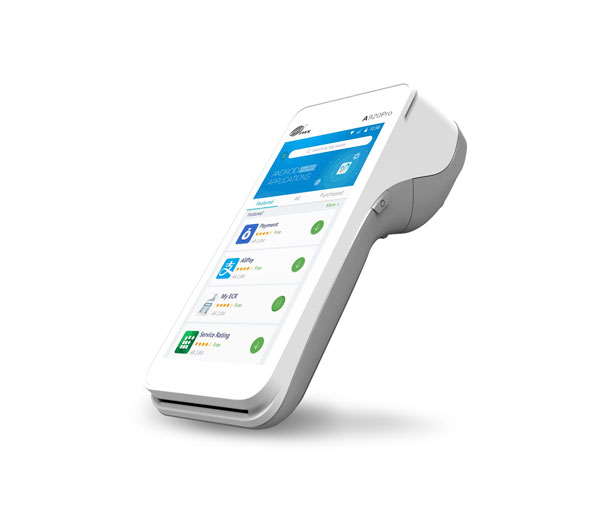“This is going to change everything about how we do everything.”
That’s how Microsoft’s former chief research and strategy officer summed up the seismic impact AI technology will have on every part of our lives. A transformation is underway across all corners of commerce, and the restaurant industry is no exception.
While many businesses have been leveraging artificial intelligence tools for years, the astonishing technological advances of late are accelerating adoption, as business leaders, merchants, and entrepreneurs look for ways to integrate the rapidly evolving technology into their business strategies. In this post, we’ll explore how AI is revolutionizing the food service industry and how restaurant merchants can benefit.
What is Artificial Intelligence and How is it Changing the Restaurant Industry?
To understand how Artificial Intelligence is impacting the restaurant industry, it’s helpful to first define what AI is. Simply put, AI refers to the ability of computer systems to perform activities and tasks that have traditionally required human intelligence, such as reasoning, learning, and decision-making.
This human-like capacity offers restaurants unprecedented opportunities to increase operational efficiency, reduce costs, and boost sales while creating a more customized, convenient, and enjoyable customer experience. Today, restaurants are increasingly embracing AI-driven technology to gain an edge in a highly competitive market. Let’s dive into how it works.

Streamlining Restaurant Operations with AI
AI helps restaurants streamline operations in a number of ways. One of the most significant is the ability to optimize staff scheduling. Always an operational challenge, staffing has grown more problematic with the prevalence of shortages that continue to plague the industry in the post-pandemic era.
By analyzing historical data on customer traffic and sales, AI is able to predict when a restaurant is likely to be busiest and then schedule staff accordingly. This helps to ensure that the restaurant is primed for peak hours, while also minimizing labor costs during slower periods.
Another way AI can help streamline restaurant operations is by automating repetitive tasks. For example, AI-powered chatbots can handle the ordering process, eliminating the need for a human to take orders over the phone. This not only reduces the workload of the staff but also speeds up the ordering process and reduces errors. The bots can also respond to customer inquiries and take reservations, freeing staff to focus on more complex tasks.

Enhancing Customer Experience with AI
One of the most powerful features of AI is its ability to analyze data and then make personalized recommendations. For restaurants, it can be used to analyze customers’ order history, preferences, and even social media activity to make personalized menu recommendations when a customer is considering what to order. Take the following scenario as an example:
John, a gluten-intolerant vegetarian, is a regular at a local restaurant. One day he logs into the restaurant’s mobile app. John has previously opted-in to allow the restaurant to collect his data. The app automatically accesses his previous orders and feedback history. Based on this information, the AI-powered recommendation engine analyzes John’s preferences and dietary restrictions, as well as the time of day and season, to generate a menu tailored specifically for him.
John sees a dish he’s never tried before, one that is likely to appeal to his taste (based on the recommendation engine’s analysis of his past orders and feedback). Sure enough, he enjoys the dish thoroughly. John then leaves a positive review on the app which helps the recommendation engine refine its suggestions for his future visits. This example showcases how restaurants can foster customer loyalty by personalizing and enhancing the dining experience with AI-powered menu recommendations.

Targeted Marketing Strategies with AI
Further leveraging insights drawn from data analysis, AI gives restaurant owners the ability to automate powerful, profit-boosting marketing strategies. By identifying customer preferences, habits, and even locations, AI applications can create personalized promotions for increased relevancy and ROI. It also has the ability to analyze the results of these campaigns, quickly pinpointing areas of improvement. Merchant can then optimize their efforts accordingly.
Inventory Management with AI
Inventory Management with AI AI can also help restaurants improve their inventory management by analyzing sales data and ingredient usage. This empowers merchants to make more informed decisions about ingredient purchases. For instance, they could order more popular ingredients and reduce orders for those less popular, resulting in less waste.
Integrating AI in Your Restaurant
Embrace Change
Allow yourself to be open to new ways of doing things. While the potential to profit from AI is immense, it will require adaptation and a willingness to try new approaches.
Start Small
Focus on specific use cases where AI would likely have the most impact. For example, you might start by using AI to analyze customer data and make personalized recommendations. Or implementing a chatbot to take orders.
Invest in the Right Tools and Platforms
To implement AI successfully, you’ll need to invest in the right tools, which will vary depending on the type of restaurant you run and your objectives. It might be chatbot software, a recommendation engine, or an AI-powered Point of Sales system. Consult with an expert who can help you choose the most suitable solution for your business. You can contact us here for our recommendations.
Train Your Staff
Even though AI is designed to automate certain tasks, your staff will still need to be trained to use the new tools and platforms effectively.
Here to Stay
AI is quickly becoming a defining technology of our time. Whether used to increase efficiency, cut costs, deliver more personalized promotions, or any of the other benefits AI offers, restaurants that embrace this technology will be better equipped to meet the evolving expectations of their customers and stay competitive in our brave new world.
